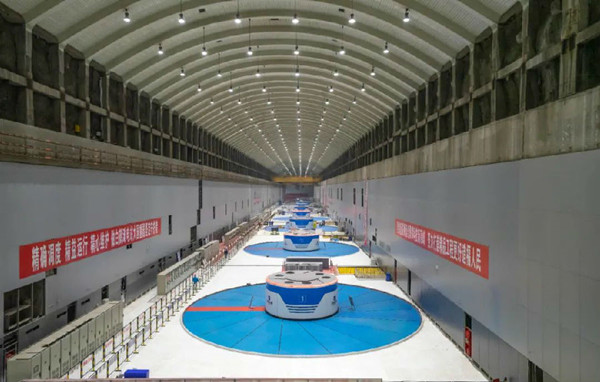Baihetan Hydropower Station Has Produced 10 Billion KWh of Power in 2022
As of May 5, Baihetan Hydropower Station, the world's largest and most difficult-to-build hydropower project that is still under construction, had generated 10 billion kilowatt-hours of green power in 2022.
The power amount equals that produced by burning about 3.06 million metric tons of standard coal, and represents a reduction of about 8.38 million tons of carbon dioxide, which adds a great deal to China's green transformation in economic and social development and its goal of peaking carbon dioxide emissions by 2030 and reaching carbon neutrality by 2060.
Since the first generator units went into operation, the station has cumulatively generated 25.6 billion kWh of power, and all units are stably running.
At present, the last two generator units of the station are in their closing stage of final assembly.
Located over the Jinsha River on the border of Southwest China's Yunnan and Sichuan provinces, the Baihetan Hydropower Station is a national major project for the country's west-to-east power transmission.
It is installed with 16 hydro-generating units, each with a capacity of 1 million kilowatts, the largest single-unit capacity in the world.
Baihetan Hydropower Station, together with the Wudongde, Xiluodu, Xiangjiaba, Three Gorges, and Gezhouba power stations, forms the world's largest clean power corridor. All of them are operated by China Three Gorges Corporation.
Once fully operational, the company will have 110 hydropower generator units on trunk branches of the Yangtze River with a total installed capacity of nearly 71.7 million kW.

An inside view of the workshop of Baihetan Hydropower Station in South China [Photo/sasac.gov.cn]
(Executive editor: Wang Ruoting)



